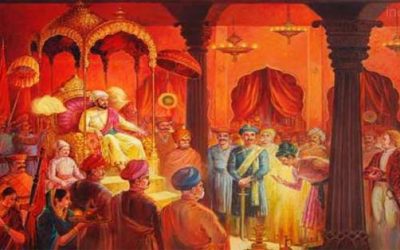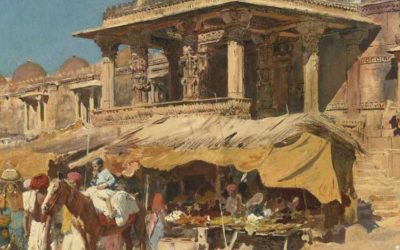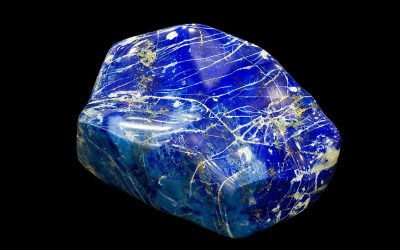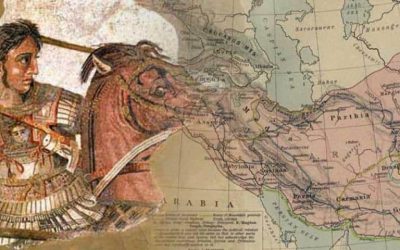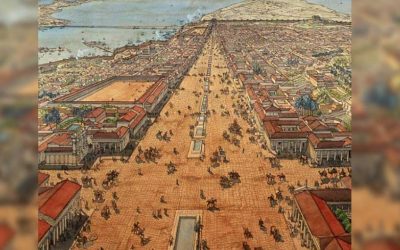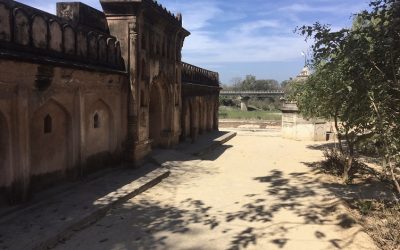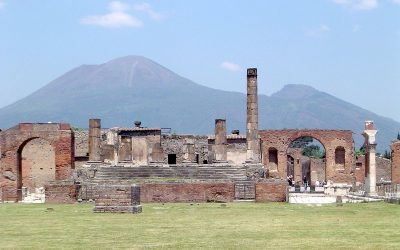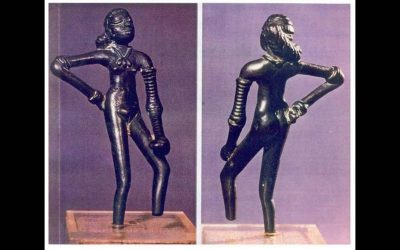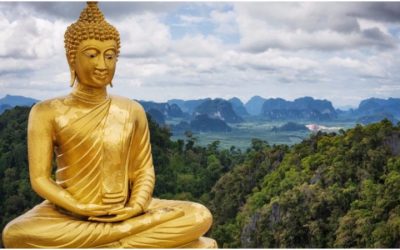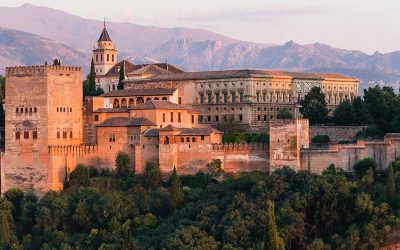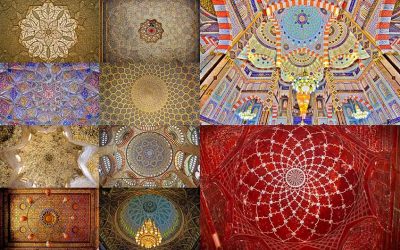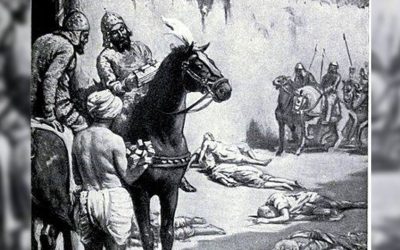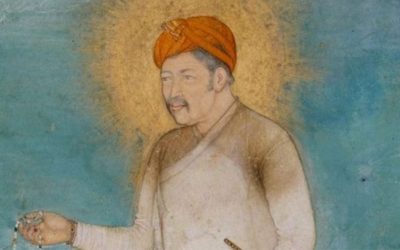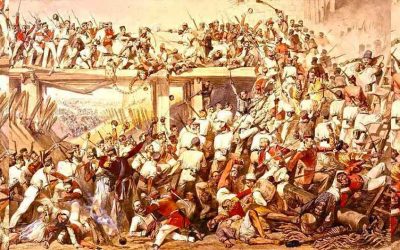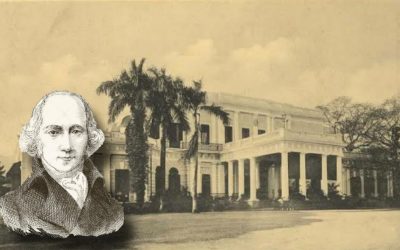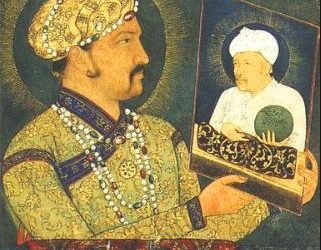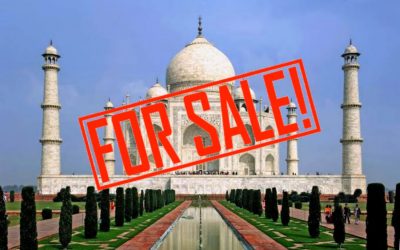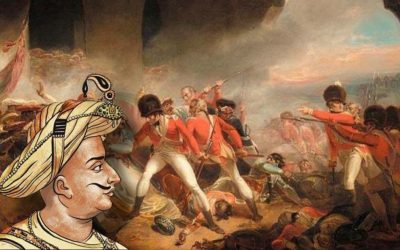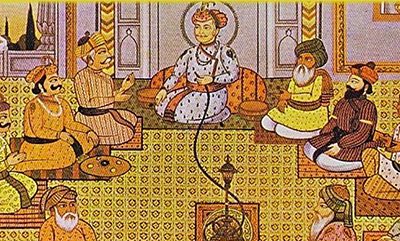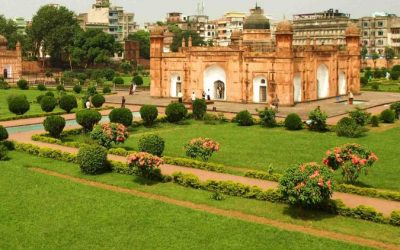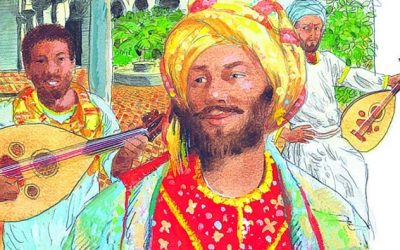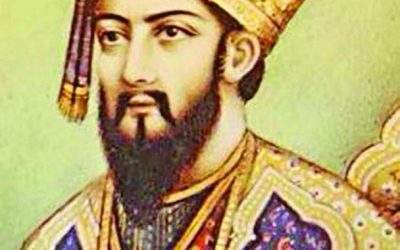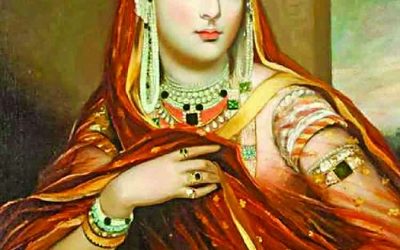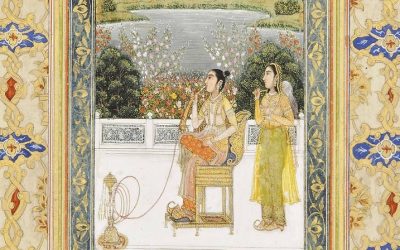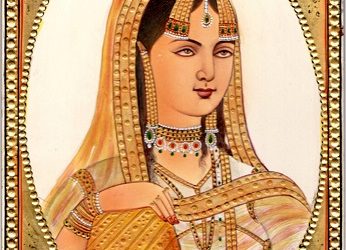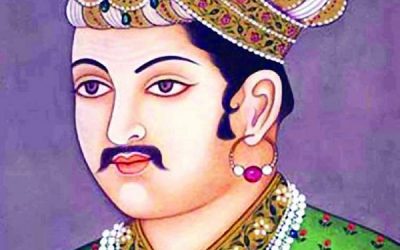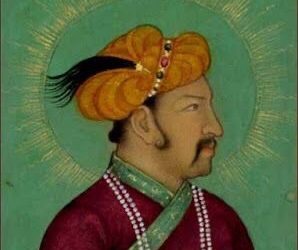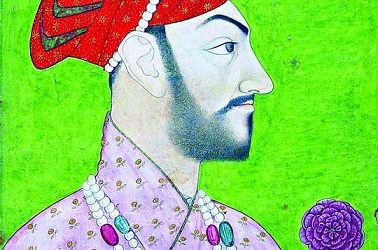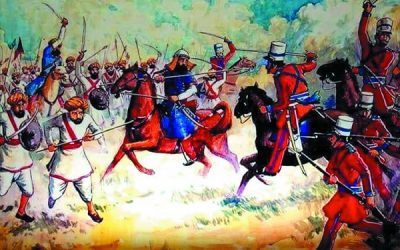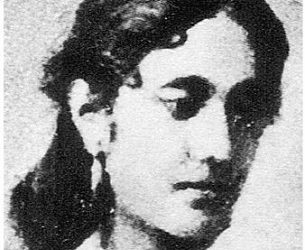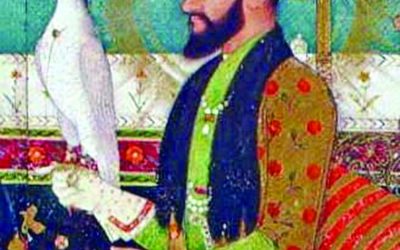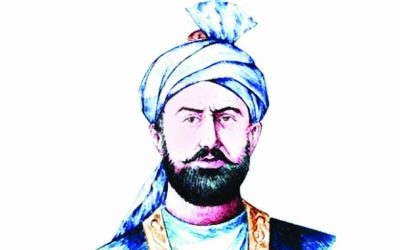In 1450 BC, Knossos palace stood proudly in the Northern part of Crete. A grand ceremony of worship is going on in the palace premises. This arrangement is to satisfy the goddess for the good production of crops and protection from natural calamities. Yes, not gods, but only goddesses because...
World History
Taxila: A Glorious City of Ancient India
I am talking about Taxila. Yes, for thousands of years, I have been walking in the horizon with the pride of this name. The taste of the laughter of hundreds of children in my lap! Countless kings and maharajas, travelers from afar, even enemies of my family, I have shown no fault of hospitality...
King Harshavardhana of Vardhana dynasty
The elegant sight of white flowers presented a beautiful contrast to the cacophony of colours adorned all around the palace walls. The colours held luxurious textures of all kinds: muslin, linen, cotton, and abundant kinds of silk. The air bore the sweet aroma of scented ponds. The halls were...
Indo-Roman trade relations
Tigers, elephants, rhinoceros, serpents and many more exotic species were now in their land. People watched in awe as these animals gradually made their home in Rome. How did those animals get there? The answer is simple- trade. The history of this trade is documented in the literature and...
Badakhshan’s Treasure Trove: What is Lapis Lazuli ?
A piece of heaven on Earth, a stone with such hypnotic beauty that it has left everyone an admirer and yearning for more, Lapis Lazuli is perhaps a stone so popular that it has been recorded through most of human history. Dating back to antiquity, Lapis Lazuli, more than a stone, is an enigma,...
Alexander The Great – The Undefeated Phenomenon
Alexander the Great was the creator of the world’s grandest empire. With incredible military achievements and diplomacy, he built a legacy others could only dream of achieving. Alexander was the king of Macedonia, an ancient kingdom of Greece, and a part of the Argead dynasty. He was born in 356...
The Rise and Fall of Alexandria
Think of a place where all the world’s artists, writers, scientists and such gathered, and where all the knowledge of the world, especially knowledge about maths, science, and literature, were stored. Now, think of the power this place has the potential to hold, especially at an age where...
Tikaitganj & Raja Tikait Rai (Diwan of Nawab Asaf Ud Daula)
Lucknow, the capital city of Uttar Pradesh is famous for its 18th century monuments build by the Nawabs of Awadh. Explore the story of an 18th century hidden heritage located in one of its dusty village of Maliabad Tehsil build by Raja Tikait Rai, the finance minister of Asaf Ud Daula. Tikaitganj,...
Pompeii
Pompeii is one of the world’s rarest phenomena. Unlike other historical sites, the age-old city seems petrified in time, much like a picture taken from the period when the city was alive. This is due to the ancient land being hidden under 13 to 20ft of volcanic debris caused by the eruption of...
The Dancing Girl
The Dancing Girl is an uncommon and exceptional work of art created during the Indus Valley Civilisation about 4500 years ago. It is an ancient bronze statue, one of the mere two statues of its time where the figure portrayed has an easygoing posture unlike other artworks that show people in a...
Buddha
Gautama Buddha is the man who holds the title of the Buddha, a Sanskrit word meaning “the one who is enlightened”. Gautama was born as Siddhartha Gautama in the 5th century B.C. in Lumbini, Nepal. His father, King Suddhodana, was the ruler of a small kingdom and upon Gautama’s birth, wise men...
Granada Alhamra and a love affair
Most European countries are recognized for their outstanding art and architecture. People from all around the world gather in countries like Italy, Germany, Spain, France to embrace the beauty of these fine arts. Whenever in Paris, France, a visit to the Eiffel Tower is an opportunity that must...
Muslim Heritage- beyond India into the land of Bengal
The journey of Islam from the Middle East to the land of India has remained to be one of the most remarkable turning points in world history. India has been a land well protected by its natural barriers with the Arabian Sea in the West, the Himalayas in the North and the Indian Ocean in the South....
Horses of Bakhtiyar
Ikhtiyar al-Din Muhammad bin Bakhtiyar Khilji, also known as Muhammad Bakhtiyar Khilji, has been depicted both as a hero of Muslim conquest in Bengal and a destroyer of the great universities in Nalanda, Vikramshila and Odantapuri in present-day Bihar. It is still uncertain if he was truly the...
Akbar and Birbal
Abu'l-Fath Jalal-ud-din Muhammad Akbar, more popularly known as Akbar the Great, was the third emperor of the Mughal Empire. He ruled from 1556 to 1605 and is hailed as the most celebrated Mughal emperor since he not only strengthened the foundation of the empire but also spread the Mughal regime...
The Revolt of 1857: The First War of Independence
In a world not too far back into the past, the harmony of Bengal, Bihar, and Orissa wasn’t left unperturbed. All the way from Europe, the British heard of the land of Gold; soil so fertile and rich; and of the magical hands that weaved cotton, silk and muslin so magnificently that the world would...
THE HAUNTED OF HASTINGS HOUSE
Hastings House is an ancient, beautifully made house situated in Alipore, Kolkata. It was built in the late 1700s as a country house for Indian first Governor-General under the British rule, Warren Hastings. Even though it is a structure from decades ago, it is still talked about, not for its...
Abdur Rahim Khan-E-Khana
The educational department flourished greatly during the 16th Century. The 16th Century consisted mostly of the good development of India in South Asia, which was mostly possible because of the third Mughal Emperor, Akbar, who was crowned at the age of thirteen by Bairam Khan. Khanzada Mirza Khan...
“The Magnificent Taj Mahal Up For Sale”
Vasco da Gama's arrival in Calicut on the 20th day of May 1498 marked the beginning of a long and historic era as it opened the sea route from Europe to the far East. Immediately after the discovery of the newly found route, India boomed into a centre of attraction for European traders. The...
Tipu Sultan’s Weapons
The British East India Company's relentless enemy, Tipu Sultan, was at odds with his attack on British-allied Travancore in 1789. Although he gave them a good fight, Tipu Sultan was defeated, and the East India Company eventually took many of his things by force. From time to time, the arms of...
PORTUGUESE INFLUENCE IN BENGAL
All foods have history; where they originated from, what they looked like the first time they were seen as consumable and how they've evolved throughout the years. We take their history for granted because to us it's just food; we don't see it as something to have an interesting past. But a lot of...
SATI: The blatant oppression of women
The blatant oppression of women and their rights throughout history is no surprise and is very apparent from looking into events that have taken place ever since history has been documented. Women were thought to only be a man's possession with no ground of their own to stand on. Their voices were...
Emperor Akbar’s Navaratnas: The Extraordinaires
Tansen, also referred to as Tan Sen or Ramtanu, was a prominent figure of Hindustani classical music. Born in a Hindu family, he learned and perfected his art in the northwest region of modern Madhya Pradesh. He began his career and spent most of his adult life in the court and patronage of the...
Bibi Pari-An enigma
Among the great paradigms of Mughal architecture built in and around Dhaka, one of the more well-known ones is the famous Lalbagh Fort. The fort, though left incomplete, is adorned with an elaborate Mughal-style garden and stands by the River Buriganga in the old part of Dhaka. Its construction...
Ziryab: The trendsetter
Religion has always been one of the roots of conflicts in the world since medieval periods; with every era came a new religious controversy that marked the beginning of a new dynasty. One of the most peaceful ages in history, where people of different faiths lived in harmony, discussed daily...
Alauddin Khilji: A hero or a villain?
In the pages of history, Alauddin Khilji has enormously scorched his mark deeply enough to be recognized even today. But who was he? Should we call him a villain or a national hero; an eyesore or a treasure? Before we fall onto the conclusions of these queries, let us first know a little bit about...
Forgotten Queen of Oudh: Malika Kishwar
Queen Malika Kishwar was the mother of King Wajid Ali Shah, the last king of Oudh which was a princely state in the Oudh region of North India. Even though the queen never left the royal palaces of Lucknow, her grave now rests at the famous Père Lachaise cemetery in Paris. It lies unmarked and...
Gulbadan Banu Begum – Much loved yet forgotten
"If we were to judge by history books, it would be easy to think that men were pretty much the only people who mattered in history - or at least, the ones worth remembering. That isn't true, of course, but that's the story we're accustomed to hearing about the past: one where the presence of men...
Hamida Banu Begum: The Feminist Queen
The history of the Indian Subcontinent is rich and varied, full of heroes who have set great examples and made immortal contributions to the development of the land only to be forgotten. Of the many accomplishments of the West, one is that they have spent fortunes on research and preservation of...
Abul Fazl, a gem in Akbar’s royal court
Navaratnas or 'The Nine Gems' was a term applied to a group of nine extraordinary people in an emperor's court in India. Like the previous keepers of this title, Abu'l-Fazl ibn Mubarak was one of the fabled gems in Akbar's royal court. An advisor, confidante and close friend, Abul Fazl was one of...
Jahangir- the curious and observant Mughal emperor
In the history of Mughals, one name that stands out among the rest is Emperor Akbar. He was the greatest of all the emperors to rule the Mughal Empire. We know about all his conquests, journeys and victories, but an integral part of his life is lesser-known to many. Despite having most of the...
Muhammad Azam Shah: Seventh mughal emperor
The Lalbagh fort that stands in the heart of Dhaka with all its glory was once started by the favorite son of the great Mughal Emperor Aurangzeb. Though incomplete, it is still one of the most prominent landmarks in Dhaka, constructed by the Mughal Prince and later Emperor, Muhammad Azam Shah...
The first war of independence
In a world not too far back into the past, the harmony of Bengal, Bihar and Orissawasn't left unperturbed. All the way from Europe, the British heard of the land of Gold; soil so fertile and rich; and of the magical hands that weaved cotton, silk and muslin so magnificently that the world would...
Kadambari Devi: The enigmatic and mysterious
Looking into the childhood and early life of Rabindranath Tagore, we come across a central character that plays a crucial role both in the recalled joy of his adolescence and youth and the consolidation of his identity as a poet and writer. This person, who rose the become the literary companion...
Victim of false propaganda
During the mid to late 17th Century, 25% of the world's GDP went from the Indian subcontinent- 50% was generated from Bengal, which made up 12% of the world's GDP. Bengal, the Mughal Empire's wealthiest province, was an affluent region with Dhaka as the capital and the business hub. Dhaka came...
Great ruler Isa Khan
Isa Khan was born in Sarail of Brahmanbaria in 1529 to the daughter of the Sultan of Bengal Giasuddin Mahmud, Syeda Momena Khatun and Solaiman Khan, Diwan under the Sultan, who later got the Zamindari of Sarail. Following the death of Sultan Giasuddin Mahmud, his son-in-law Solaiman Khan declared...



